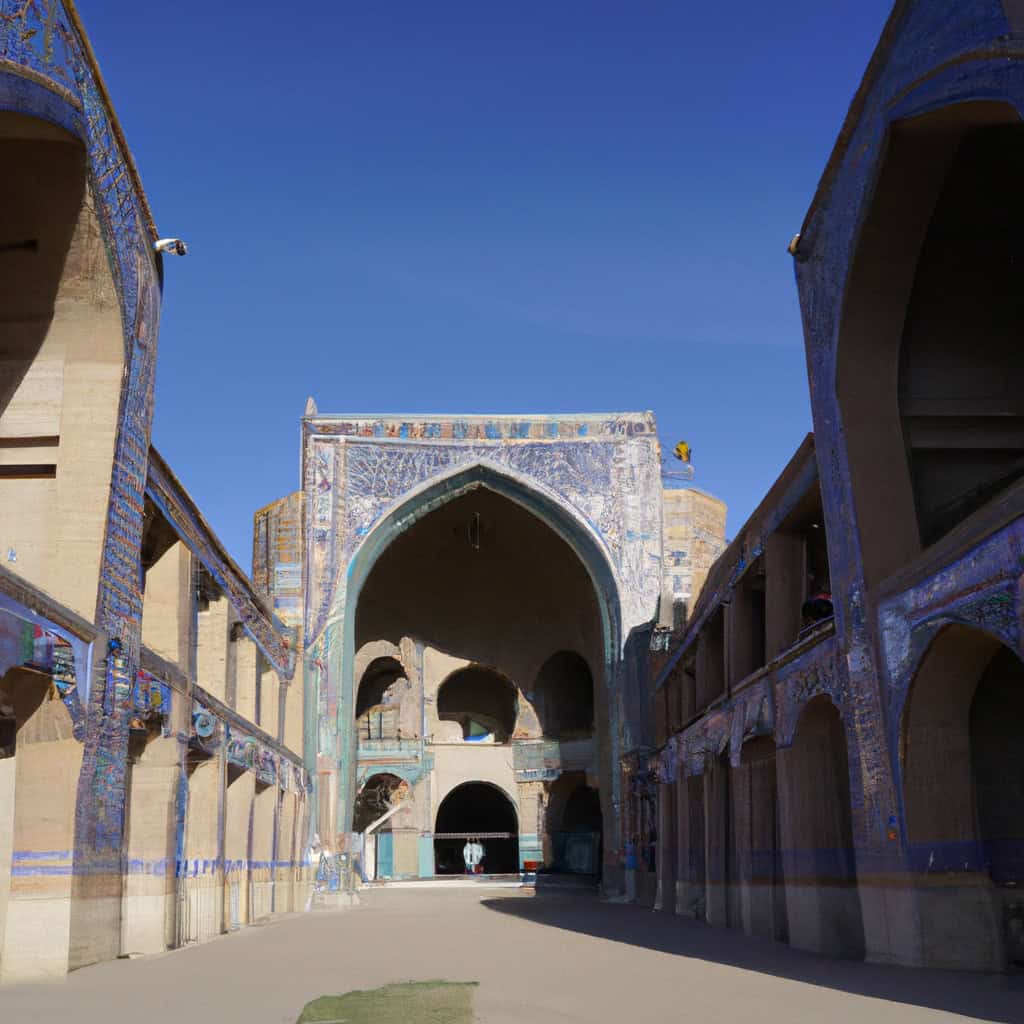Musalla Complex in Herat, is one of many fascinating sites that both foreign visitors and local tourists can explore while they visit Afghanistan and exploring Herat Province. This captivating complex beautifully embodies the essence of Afghanistan’s rich cultural heritage and holds an unparalleled historical value in the country’s annals. A timeless marvel of architecture and a symbol of past eras, the Musalla Complex creates an intriguing exploration journey through time for its visitors.
Musalla Complex Most Important Events
- Timurid Period: The most impactful historical moment of Musalla Complex was its construction period. The complex was constructed in the 15th century during the reign of the Timurid queen Gawhar Shad. This moment marks the pinnacle of Timurid architectural prowess, with Herat flourishing as a cultural and intellectual center.
- Anglo-Afghan Wars: Another defining event in its history relates to the Anglo-Afghan wars in the 19th century. The towers of Musalla Complex were used as vantage points and the site saw severe destruction due to rampant military activities. This significantly altered its original form.
- Restoration Efforts: Not failing to mention the refurbishment initiatives that began in the 20th century, helping restore the complex’s former glory. These efforts preserved the remains of the Musalla Complex, as a testament to its architectural brilliance and historical legacy.
History of Musalla Complex in Herat
The Musalla Complex has weathered many periods of turbulence in its long history. Constructed in the 15th century by the order of queen Gawhar Shad, wife of Shah Rukh (Timurid dynasty), the complex served as a significant religious-educational hub. Hosting a stately mosque, a madrasa, and an expansive mausoleum for the queen, it was once the crown jewel of Herat, a city famous as the ‘Pearl of Khorasan’ in the golden age of Timurids.
However, with the Anglo-Afghan wars in the 19th century, the complex suffered significant damage. The tall minaret towers served as crucial strategic points during these tumultuous periods causing the site to be a battlefield. Several relics of the ancient majesty of the complex were lost to time and wars, with only five minarets and a segment of the mosque, now standing as silent testimonials to its past grandeur.
Through the 20th century and into the 21st, concerted efforts have been taken to repair and restore the site. Despite the challenges, parts of the Musalla Complex are open to visitors offering insights into a lost era and exhibiting its indomitable spirit through its robust remnants.
Why It’s Important to Afghan History
The Musalla Complex is more than just a collection of ancient structures in the heart of Herat; it’s an important symbol of Afghan resilience and preservation of cultural heritage. Even though parts of it were destroyed over the centuries, the surviving structures bear testament to Afghanistan’s rich past and cultural evolution.
Furthermore, the complex stands as a reminder of the Golden Age of Herat under Timurid rule. It mirrors Herat’s past identity as an intellectual and cultural center of that epoch. The Musalla Complex, through its aesthetic grandeur and intricate craftsmanship, continues to enlighten its visitors with stories of a once thriving civilization, thereby playing an influential role in Afghan history.
Why to Visit Musalla Complex
Among the many reasons for visiting the Musalla Complex, its sheer architectural beauty ranks high. Even in its present state, the remnants of the complex exhibit intricate tile-work, ornate calligraphy and tall minarets that offer impressive views of Herat city.
In addition to its historic significance, the scenic location of the site makes it a must-visit. Nestled on the banks of the Hari river, the Musalla Complex creates a picturesque setting, ideal for shutterbugs and history enthusiasts alike.
- Magnificent Minarets with exclusive views of Herat city.
- Exquisite architectural detailing and tile-work.
- A tranquil and aesthetic surrounding near the Hari river.
- A glimpse into the glorious past of Herat and the Timurid era.
- Being part of important restoration efforts, preserving cultural heritage.
The Musalla Complex is conveniently located a few kilometers from Herat’s city center and is easily accessible by local transportation. The best time to visit is during the cooler months from October to April.
Cultural & Tourist Significance
The Musalla Complex holds great cultural and tourist significance. It showcases the brilliance of Timurid architecture, which holds a unique position in world architectural history. The complex also offers an immersive cultural experience, allowing visitors to connect with Afghanistan’s past, making it a cultural hotspot.
From a tourism perspective, the complex lures visitors with its distinctive architectural remnants, panoramic views, and an intriguing aura of history. It adds a unique charm to the overall travel experience in Herat, thereby contributing to the enrichment of Afghan tourism.
The Musalla Complex, apart from being a historical monument, holds huge educational significance, giving insights into a glorious period of Afghanistan’s past. It also provides a learning platform for architectural and history enthusiasts, adding to its cultural worth.
Interesting Facts
A lesser-known fact about the Musalla Complex is that it once consisted of over 20 grand structures, including a grand mosque, mausoleum, and several minarets, all adorned with azure blue and turquoise tiles, creating an artwork of architectural marvel.
The intriguing myth of Herat’s five minarets, part of the Musalla Complex, being visible from any part of the city, is a testament to their towering height and iconic status. The tales surrounding these minarets add an element of magic and mystery to the historical site.
The annual restoration efforts organized by local bodies and international organizations create a unique opportunity for visitors to contribute actively towards preserving this historical monument. These initiatives enhance the touristic appeal of the Musalla Complex by combining travel with an opportunity to engage with the local community and partake in heritage conservation.

